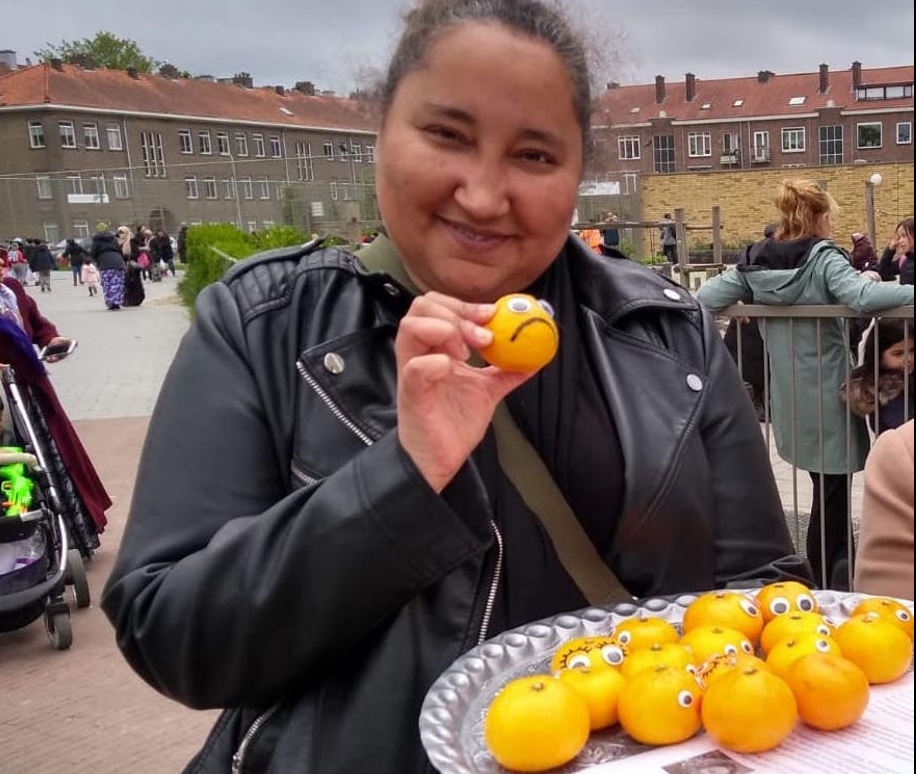The Tangerine-method is a method you will not find in the books. The method was created by SevenSenses Participatory Action Researcher Wilma van der Vlegel as a conversation starter.

The Tangerine-method is a method you will not find in the books. The method was created by SevenSenses Participatory Action Researcher Wilma van der Vlegel as a conversation starter.
When you want to get a first impression of how people perceive their health and you want something creative to start your conversation with.
Step 1. Decide upon the actual question you would like to ask people. Maybe it is not health related, but you can still use the method!
Step 2. Buy the mandarins and eye-stickers and place the eye stickers on the mandarin. Put the mandarins on a big plate which is easy to carry. If you like, use a standing table to work from.
Step 3. Stand in a place where you will find the people suitable for your PAR (potential participants).
Step 4. Offer a tangerine to people passing by. Ask them to draw a mouth on the mandarin that represents e.g. how they feel, how fit they are, how healthy they feel et cetera.
Step 5. Look at the mouth the person has drawn. Is it a happy mouth? A neutral mouth?A sad mouth, or otherwise? Ask them to explain it.
Step 6. Ask new questions based on the answers that you get. Use your natural curiosity to get the conversation flowing.
Step 7. After a few minutes of talking, explain him or her why you are doing this. Tell them about your PAR in easy language and if you want, invite them to participate in your PAR – e.g. starting with a more in-depth conversation about the subject. Don’t forget to ask contact details.
Step 8. Thank him or her for his time and, lateron, practice what you preached (e.g. contact him or her when you promised to do so).
Want to know more about how to have informal conversations? Check out the blog ‘how to talk with strangers – 10 tips to help you have informal conversations for your Participatory Action Research’.
In the third edition of our handbook Participatory Action Research (in press) you will also find the Tangerine-method explained.